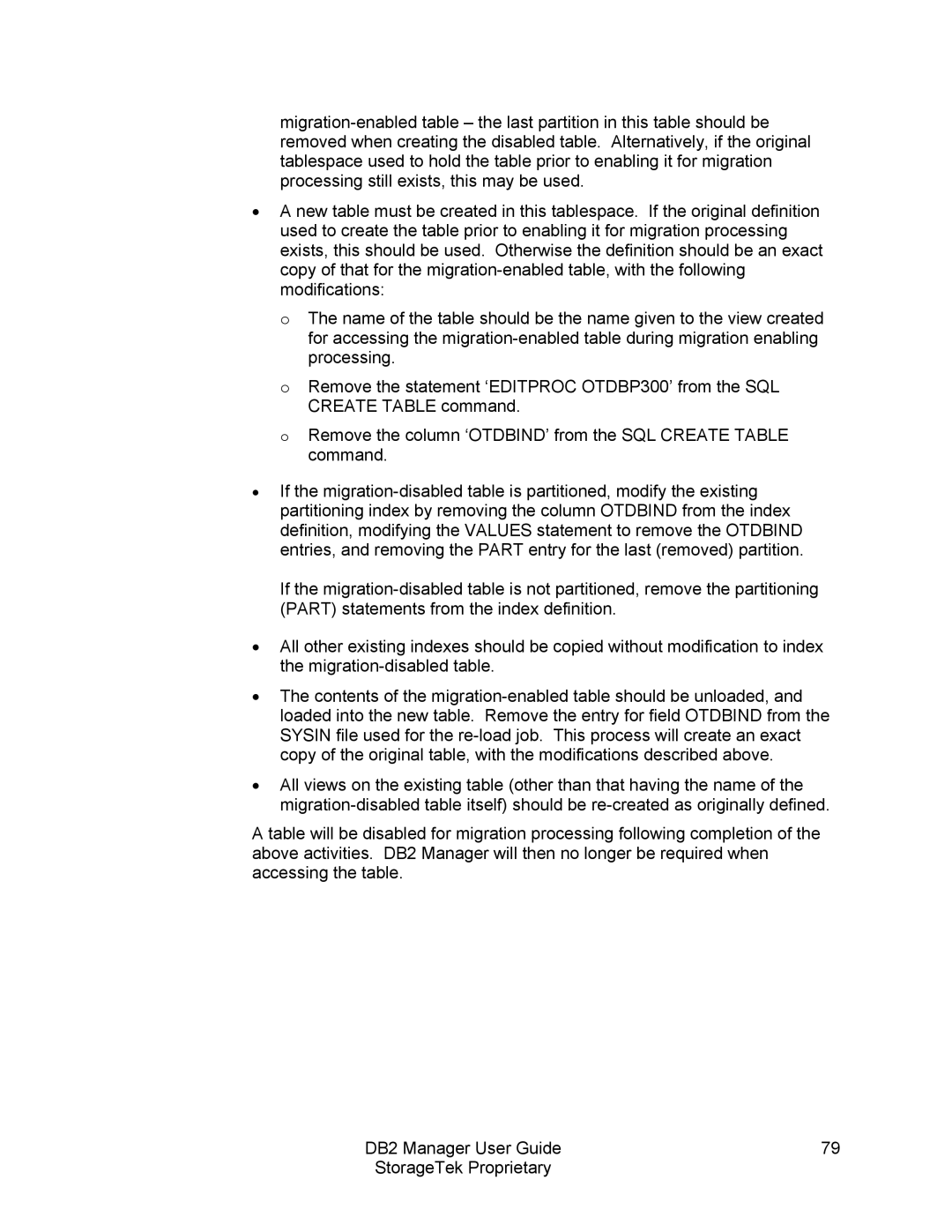•A new table must be created in this tablespace. If the original definition used to create the table prior to enabling it for migration processing exists, this should be used. Otherwise the definition should be an exact copy of that for the
o The name of the table should be the name given to the view created for accessing the
o Remove the statement ‘EDITPROC OTDBP300’ from the SQL CREATE TABLE command.
o Remove the column ‘OTDBIND’ from the SQL CREATE TABLE command.
•If the
If the
•All other existing indexes should be copied without modification to index the
•The contents of the
•All views on the existing table (other than that having the name of the
A table will be disabled for migration processing following completion of the above activities. DB2 Manager will then no longer be required when accessing the table.
DB2 Manager User Guide | 79 |
StorageTek Proprietary |
|
